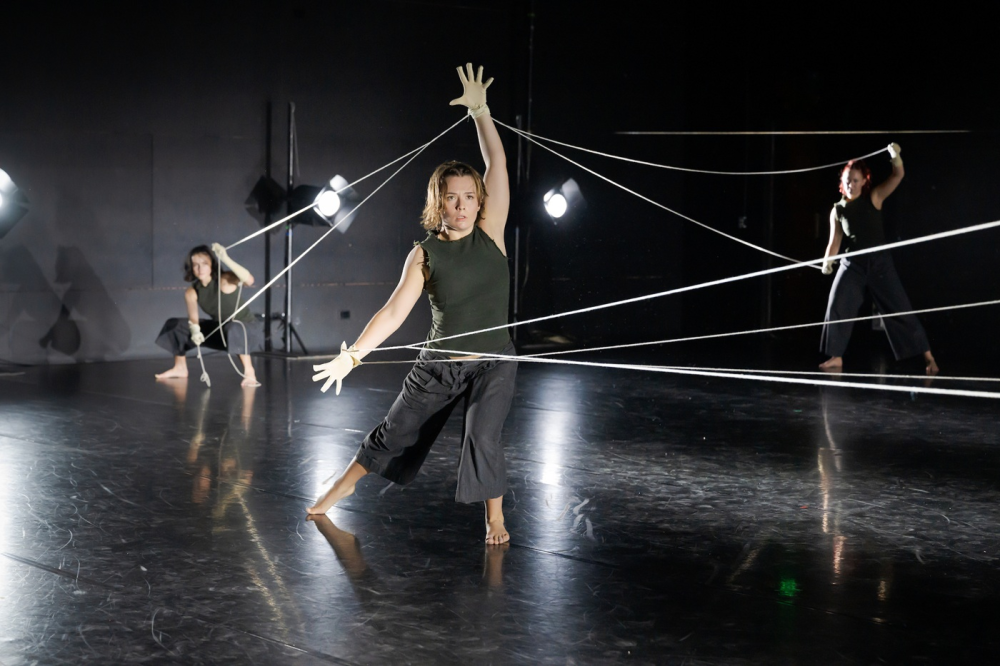Te Whaea: National Dance and Drama Centre
Wellington
9 May 2025
Choreographic Mentor: Holly Newsome
Lighting Design & Operator: Grace O’Brien
Dramaturgical Consultation: Miranda Manasiádi
Costume: Holly Newsome, 3rd Yr students with Alexandra McLeod
Reviewed by Brigitte Knight
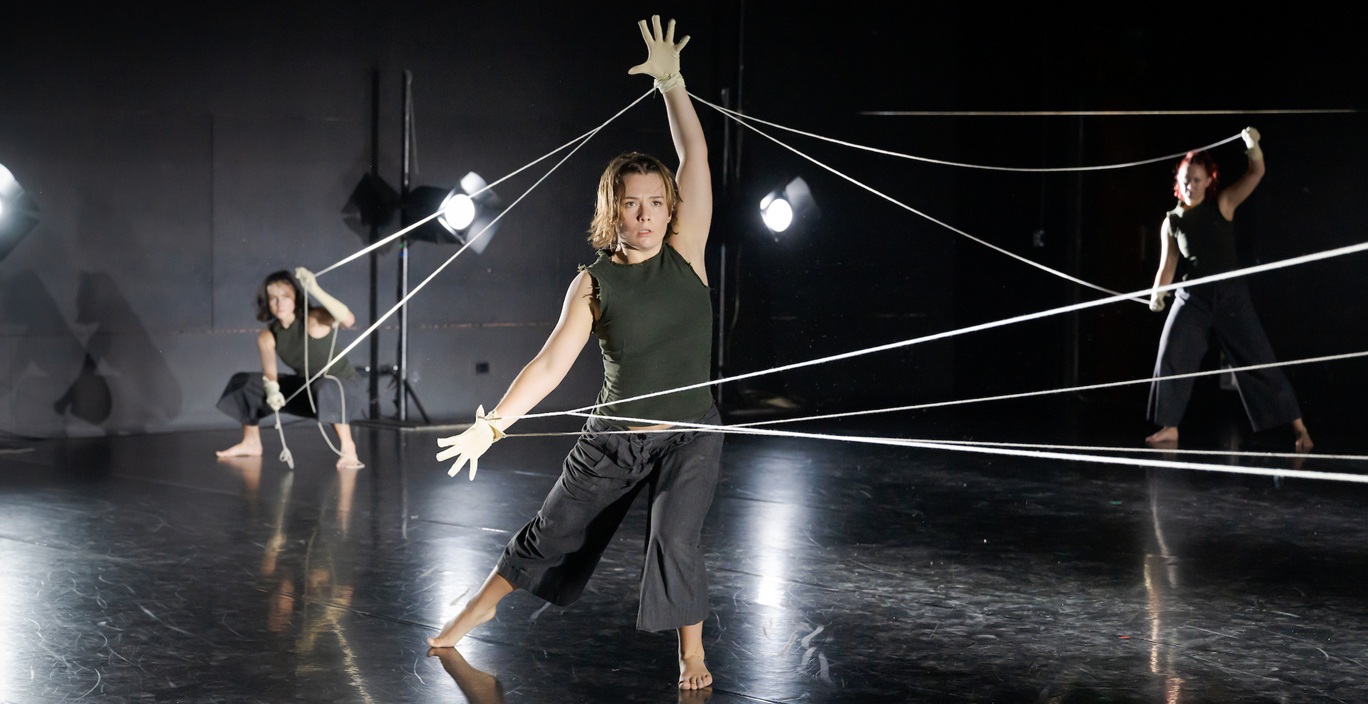
Photographs by Stephen A’Court
The New Zealand School of Dance presents How Long is a Piece of String?; nine works choreographed and performed by the nine third year contemporary stream students, curated into a cohesive production overseen by choreographic mentor Holly Newsome and dramaturg Miranda Manasiádi. In a new initiative for 2025 the student choreographers were each paired with a postgraduate student from The New Zealand School of Music: Te Kōkī - Victoria University of Wellington Te Herenga Waka to develop an original composition for their dance work. Roughly half of the choreographers use their composer’s piece in the show, resulting in a refreshingly varied and interesting collection of musical works. Presented with the wings flown out and the side stage areas exposed, How Long is a Piece of String? emphasises choreography and dance, all the while retaining common threads, themes, and connections throughout the performance.
-PhotoStephenA'Court.jpg)
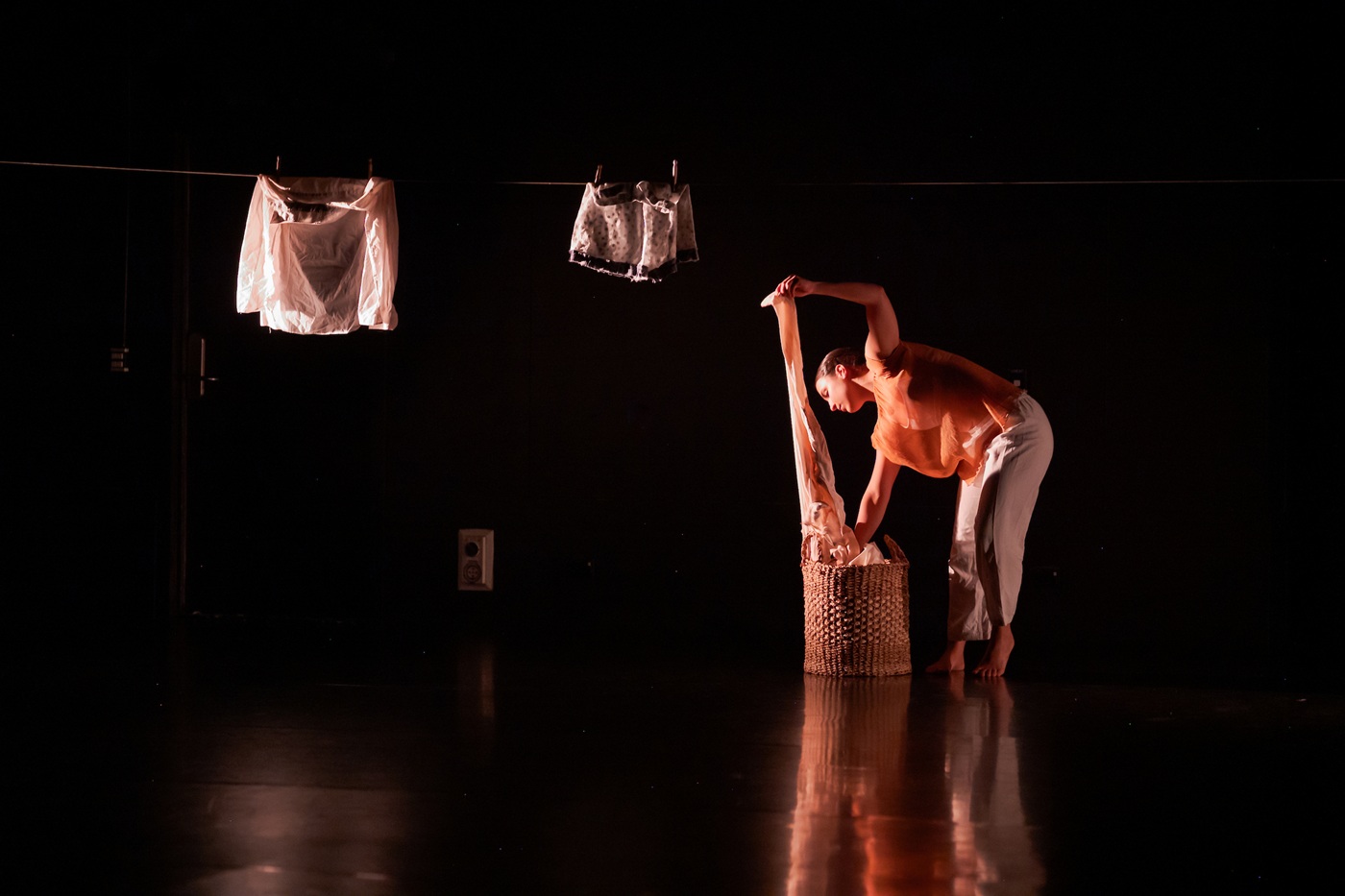
Opening the show with a superbly calm and inviting entrance is Hanna Hairil’s Open Waters, a work for the entire third year class that explores abstract themes of the ocean’s ebb and flow, connection, and unity. Considering crashing waves, whirlpools, water glistening over rocks, Hairil’s generous, ceaseless movement vocabulary is inspired by Chinese water sleeves and considerations of identity when one is not rooted to a single country as home. The material flatters the dancers and clearly expresses Hairil’s choreographic intention without becoming predictable or literal, and the unison sections will continue to tighten during the season. Agon (Ancient Greek: struggle or conflict) by Millie Madden utilises staging that effectively hones in on a romantic relationship (how quickly one’s world can change, how easily another can walk away), approaching the choreographic process with a wholesome, playful, and nostalgic energy. Madden brilliantly develops character, emotional depth, and narrative arc through her movement material, and performing in her own work alongside Mia Mangano masters rich and creative partnering, performed skillfully with control and nuance.
.jpg)
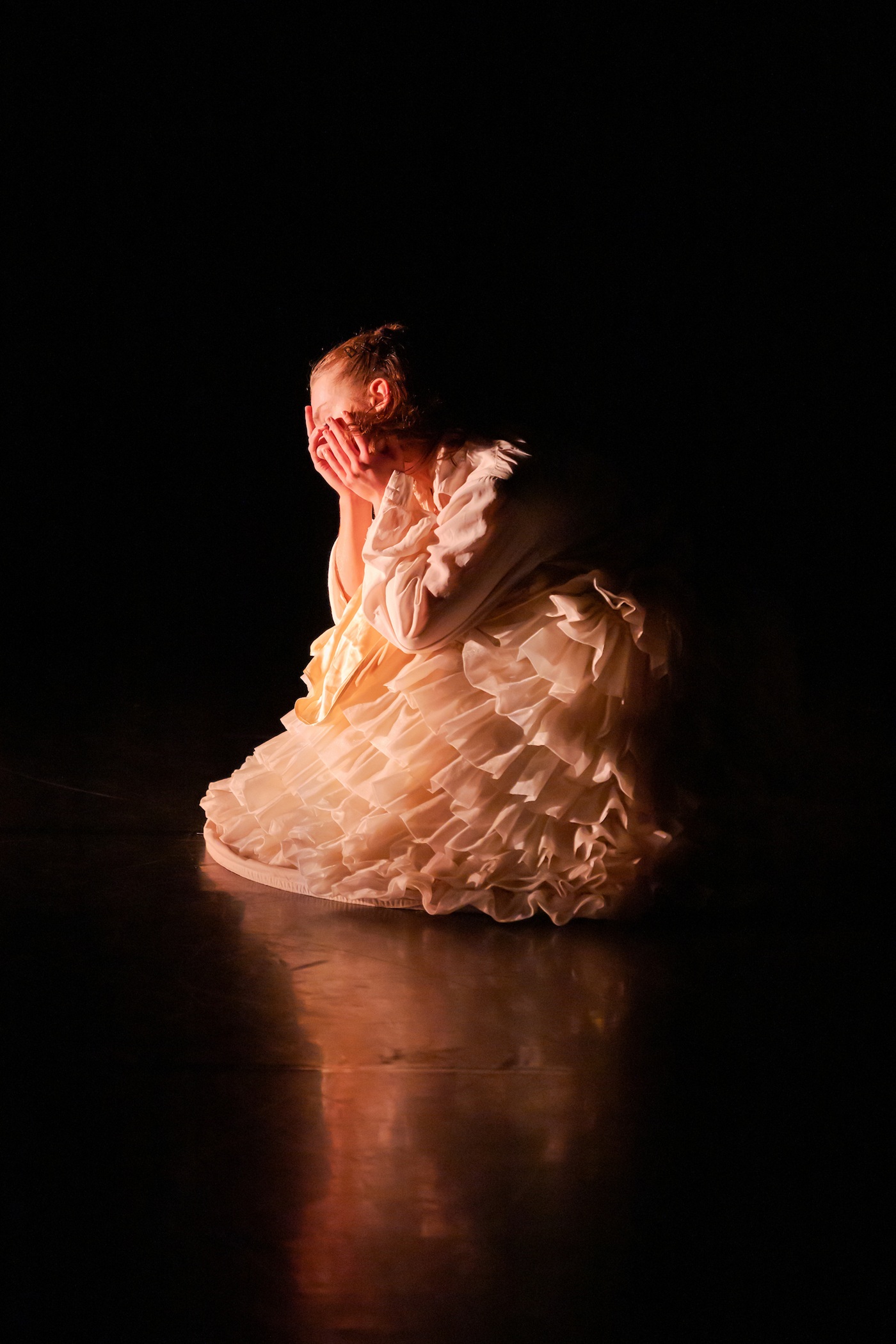
Ali Mayes’ We Breathe the Light is a beautiful, abstract work of warmth and energy, enlivened by effective and intelligent use of breath, presenting four dancers rejuvenated by the sun and its light. Maye’s movement material is exhilarating and vibrant, developing with delightful speed precisely realised by Gabrielle Arnold, Millie Madden, Aylish Marshall, and Lucy Thorogood. A deeply considered work, I Hope the Exit is Joyful by Molly Walker is inspired by Frido Kahlo’s double self portrait The Two Fridas (1939), the artist’s first large scale painting and one of her most notable. Meaning and imagery from the painting is evident - especially the large crinoline skirt and ribbons of red - but consistently used as a springboard and not a restriction by the choreographer. Millie Madden delivers a consummate performance in the role of Frida Kahlo, balancing her stage presence with a savvy and essential ensemble inspired by the villaging scenes of classical ballet. Walker’s work considers the two identities of Kahlo, the stripping away of things that no longer serve her, and benefits from a bespoke score by Paul Walker.

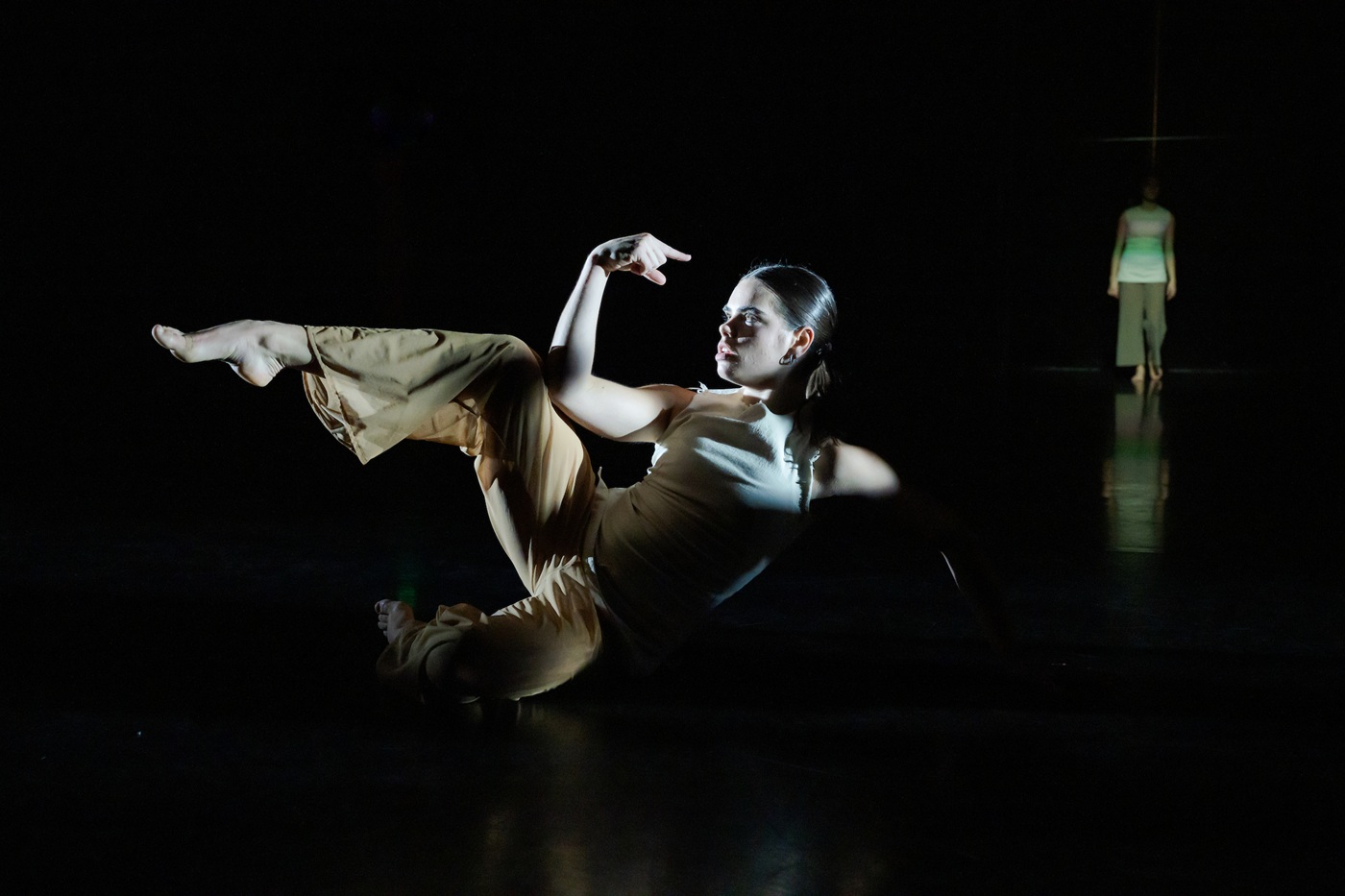
Mia Mangano’s Mother is an experimental and bold work, considering parasitic relationships in the scientific sense, and juxtaposing old and new, fresh egocentric action with movement as old as time. Biological, geographical, and interpersonal ideas and imagery collide; brick by brick a world is created as a relationship serves one and depletes the other. Mangano utilises red (fabric tube, stilettos, minidress) to carve up the space and splice the action onstage, offering soloists Hanna Hairil and Molly Walker the chance to shine in their entwined, conflicted, contrasting characters and movement vocabularies. A bombastic tonal shift in music introduces Non Player Character by Lucy Thorogood who considers the simulation hypothesis, reflecting the intersection of quantum computing and philosophical theory. Thorogood develops a well-considered movement vocabulary of the robotic/electronic while avoiding becoming too literal or one-dimensional. The choreographer’s onstage simulation embraces human interaction, and poses questions of faith, reality, the supernatural, choices, and control. Non Player Character’s five dancers are rigorous in their interpretation of the movement material, with Hanna Hairil entrancing and cool in her mastery of the work’s intention and technique.
Aylish Marshall’s masterful Crazy achieves near-perfect symbiosis with the music which clearly informs and drives the choreographic decision making. Balancing instinct with intellect, Marshall gives us the “full mind” overflowing into the body, in isolated, syncopated, frenzied waves. Amongst Crazy’s impressively strong cast Gabrielle Arnold and Ali Mayes are captivating and commanding with professional-level technique, considered artistry, and electric attack. All four dancers hold the space with superb control as the work deliberately blurs the fourth wall in its closing moments. Red Pulse by Lin Tzu-Chi (Richie) utilises traditional Chinese dance and Kung Fu (Chinese martial arts) to the enlivening pulse of military drums and pipa, in a work that explores continuous, circling movement and plays with classical shapes presented with different dynamics. A work for three dancers, Red Pulse contrasts unity and individuality while continually rearranging and reforming the dancers and the movement material.
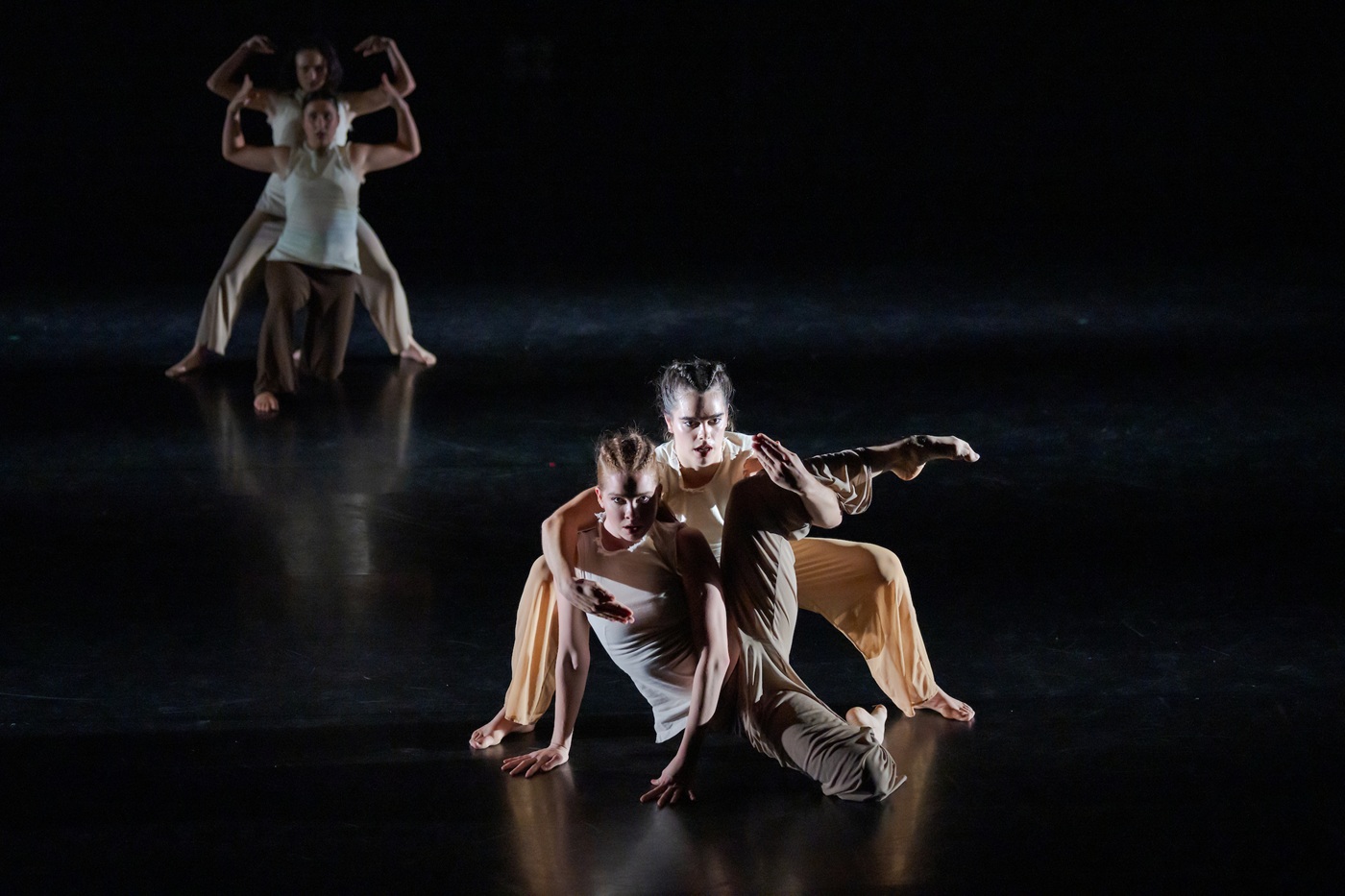
-LucyThorogood%2CMillieMaden%2CHannaHairil-PhotoStephenA'Court.jpg)
Finally, Gabrielle Arnold’s Unravelling Her is a profoundly considered and intelligent work, impressively layered yet deliberately gentle in presentation. Five women wield a web which is both inherited and weaponised, buying into an institutionalised system that does not serve them. Soloist Aylish Marshall is breathtaking in her physicality and artistry here, and the ensemble work deftly, precisely, and quietly to enable her mastery of Arnold’s choreography. With Unravelling Her Arnold explores the politics of touch, in a work imbued with high risk and consequently even higher reward.
How Long is a Piece of String? Is supported by complementary and seamless lighting by Toi Whakaari: New Zealand Drama School graduate Grace O’Brien, which creates shape and structure around the nine choreographies. Costumes curated from the New Zealand School of Dance’s wardrobe archive (Holly Newsome, 3rd Yr students with Alexandra McLeod) strike a successful balance between delineation and coordination, and interlink with the (threads, strings, fabric, clothesline) props and colour palette of the show. With a subtext of empowerment and relationships between people and environments, How Long is a Piece of String? allows thematic elements to emerge, while skilfully avoiding being so literal an exploration of a prop/theme that it becomes rudimentary. The New Zealand School of Dance 2025 contemporary stream dancers are an especially consistent and committed group of young artists; primed and thoroughly prepared to add their voices to the conversation of the art of dance.
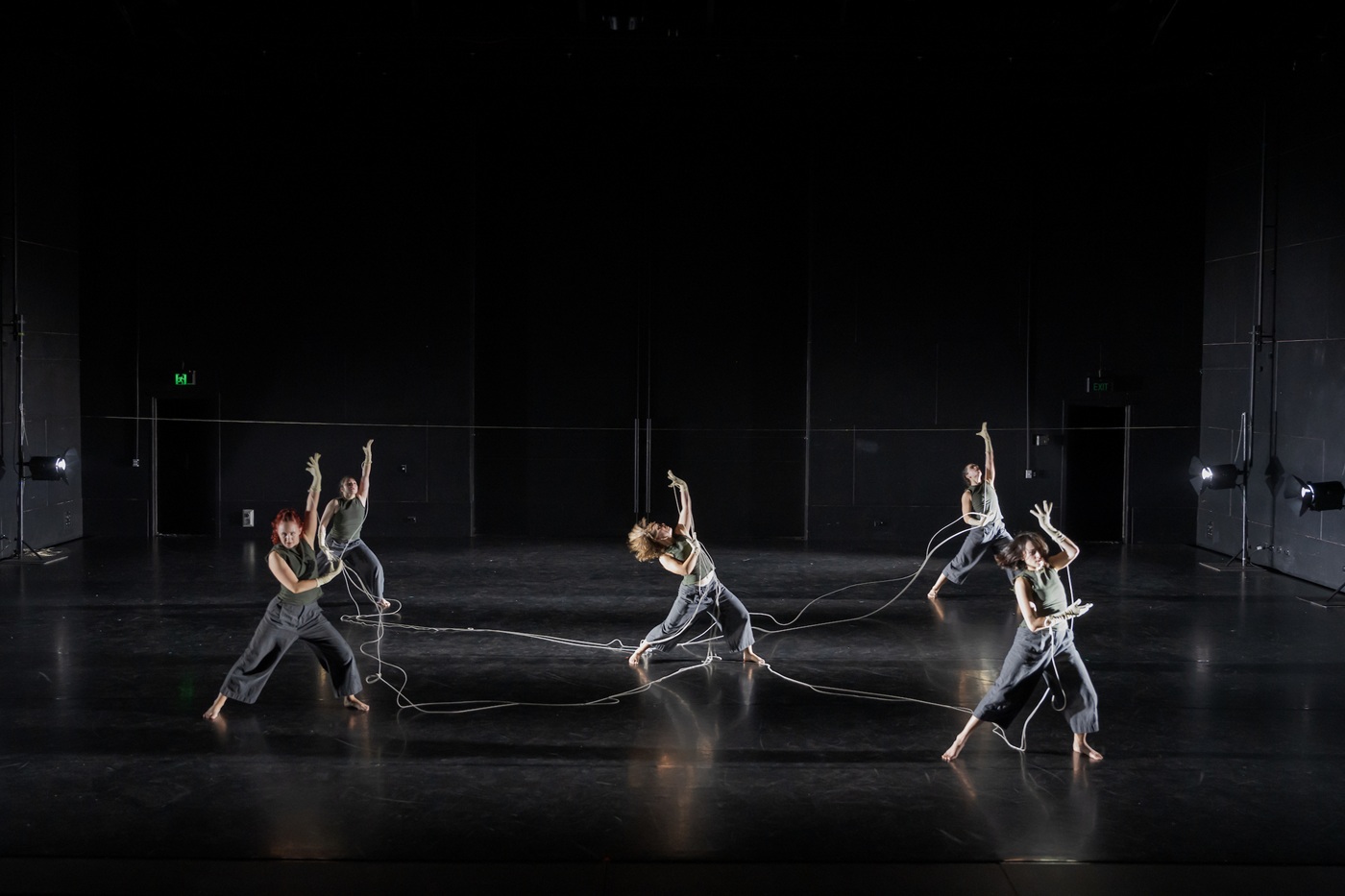
Photographs by Stephen A’Court
Gallery is loading. Please wait. Javascript will need to be enabled to view it.

